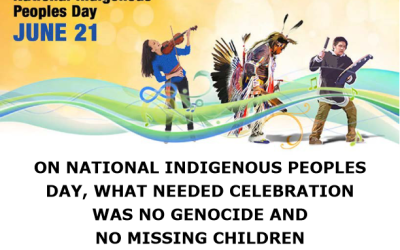A recent Winnipeg Free Press story (“Study blasts myths about aboriginals,” by Paul Samyn, March 10) casts doubt on public perceptions about the state of aboriginal life in Canada. But the study’s findings fizzled out pretty quickly when you looked at details. The most valuable lesson to be gleaned from the study is a healthy skepticism for the research process it employs.
“There are three kinds of lies,” the chestnut goes, “lies, damned lies and statistics.” Commissioned by the federal Human Resources Department about a year ago from Michael Mendelson, a senior scholar at the Caledon Institute of Social Policy, this study falls in the third category. The Harper government apparently sat on the report until it was pried loose with a Freedom of Information request. It should have remained in its grave.
The report “challenges a number of assumptions about the plight of Canada’s aboriginal people,” Samyn writes. “[T]here is no evidence to support the view that natives are increasingly fleeing reserves to seek a better life in Canada’s cities. . . . There is no mass migration from reserves into cities.” Take a walk down Dufferin Avenue in Winnipeg and see if you believe that.

Like most of the study’s conclusions, however, that one contains a grain of truth. The flight to the cities did taper off some years ago, and many aboriginals have now left. But they returned for the most part to rural areas, not reservations. And the flight did take place – to the point that about half of treaty-card holders living in First Nations changed addresses. The fact that it’s abated is old news.
The study says the aboriginal participation rate in the workforce is higher than expected and close to the Canadian average. Is that supposed to make us feel better about the almost total unemployment on many First Nations? What does the “participation rate” mean, anyway? Only that you are available for work, not that there’s any to be had.
Mendelson’s cheery optimism on this score gets him into real policy trouble. “Do not worry so much about incentives to get aboriginal people looking for work,” he says. “Worry about how to assist aboriginal people to obtain good, well-paying jobs or the skills and knowledge that lead to well-paying jobs.” But a lack of properly functioning markets and the incentives they embody is precisely the reason why there are few well-paying jobs to be had.
High labour-force participation rates among aboriginals are understandable when you consider that they have to register somehow with authorities if they want to qualify for benefits. They don’t diminish the fact that you are still standing in a line for a handout, with all that means for the loss of self-respect.
Mendelson’s on stronger ground with the education policy file, where he emphasizes the importance of completing high school. But nowhere here does he address the problem of why only half of aboriginals do. All Mendelson can come up with is a weak recommendation that we encourage dropouts to go back to school.

The report gets it completely right in one respect, when it corrects the false impression that more aboriginals live in Toronto than in Winnipeg. But that old statistical error provides a birds-eye view of the reasons why studies like this don’t usually measure up. People don’t tell the truth on long-distant surveys. Way more people in Canada tick off the box for “aboriginal identification” on the census form than possibly could have native blood.
Two years ago, the Frontier Centre started survey work for our Aboriginal Governance Index, and our first attempts to poll reserves with phone surveys and mail-ins failed to deliver accurate data. Responses were skewed. Respondents on First Nations are used to living in a society where the wrong comments in the wrong places can cost them or family members dearly.
“Who are you with?” they would ask. “The Chief and council? Indian and Northern Affairs? The Grand Chief’s office?” We quickly scrapped those methods, but found that direct travel to First Nations communities yielded excellent results. Along the way, we enjoyed a considerable degree of hospitality, laughs and new friendships.
If the folks in Ottawa who commissioned this report want reliable data, they should closer to the topic and gather facts in a different way, closer to the ground. It will cost a little more than the $22,470 spent on this report but then they could make policy conclusions that really do carry a bang.
A version of this column appeared originally in the Winnipeg Free Press March 18, 2007.


